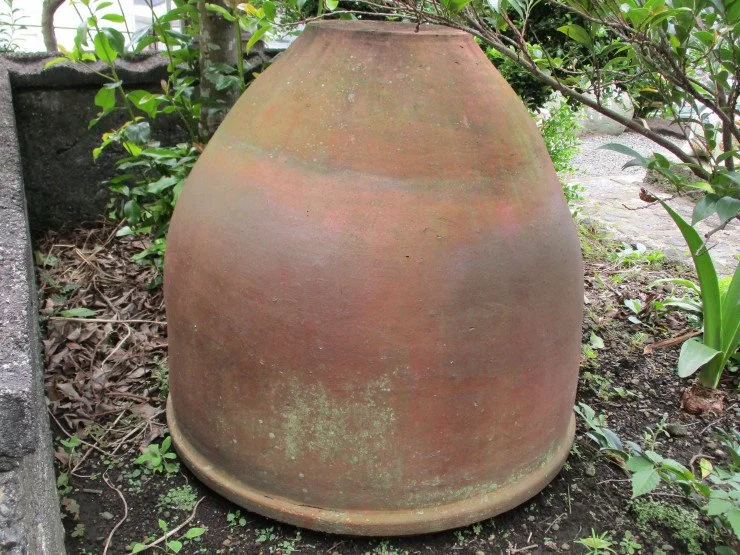It is often said that one of the factors behind the ‘traditional’ Japanese love of bathing is that Japan’s warm and humid climate has necessitated it. However, though public baths (sentо̄ 銭湯) first appeared in the middle of the Edo period (Edo jidai 江戸時代, 1603 - 1868) in urban centres, in regional and rural areas the daily bath is still a relatively recent custom.
In mountain and island villages, where water was not conveniently available, the process of filling a bath — multiple repetitions of walking to a distant communal well, lifting the well bucket, transferring the water into one’s own bucket (mizu-taru 水樽), carrying it home, and emptying it into a bathtub — meant great effort. In lowland rice field areas, where trees are scarce, obtaining firewood was also difficult. Even where there were water and firewood, farmers, harried from dawn to dusk by hard labour, did not have the time nor the mind to heat and enjoy a bath at the end of the day.
A traditional ‘water bucket’ (mizu-oke 水桶) or ‘hand bucket’ (te-oke 手桶).
At best they would stop at the well on returning from the fields (nora-gaeri 野良帰り) to wash their dirty hands and feet and wipe down their bodies; they would only bathe (gyо̄zui 行水, lit. ‘go water’) in the warmer months, or on days when it was warm enough to do so. Even at the beginning of the Taishо̄ era (Taishо̄ jidai, 1912 - 1926), farmers bathed at a frequency of around once or twice a month, as reported in a survey conducted at the time.
Unlike in recent times, with the widespread availability of propane gas and reticulated water, in pre-war rural villages heating large volumes of water was difficult, and immersing oneself up to the neck in a bath generously filled with hot water was still a luxury; the amount of hot water used in bathing was extremely small. In some areas of Kansai, there were baths in which immersion was at most up to the hips, as indicated in the names heso-furo (へそ風呂, lit. ‘belly button bath’) and kin-nurashi (きんぬらし, lit. ‘ball (testicle) wetter’).
A heso-buro (へそ風呂) in a museum.
An old photograph of a heso-buro in situ.
In farm minka, old bathwater was utilised as fertiliser, and the bathtub often doubled as the fertiliser pot (koe-tsubo 肥壷). From the belief that the richer in dirt (aka 垢) and oil (abura 脂) the bathwater was, the more effective as fertiliser it became, it was normal to use the same bathwater for many days without changing it, until it became thick and muddy and began to smell. Where there was a separate bathtub and fertiliser pot, the bathtub was emptied through a bamboo screen (takesu 竹簀) floor into the koe-tsubo below, and the smell of the disturbed and warmed liquid in the koe-tsubo would fill the bathing place. There is no possibility of a ‘love of bathing’ developing under such conditions.
A fertiliser pot (koe-tsubo 肥壷).



